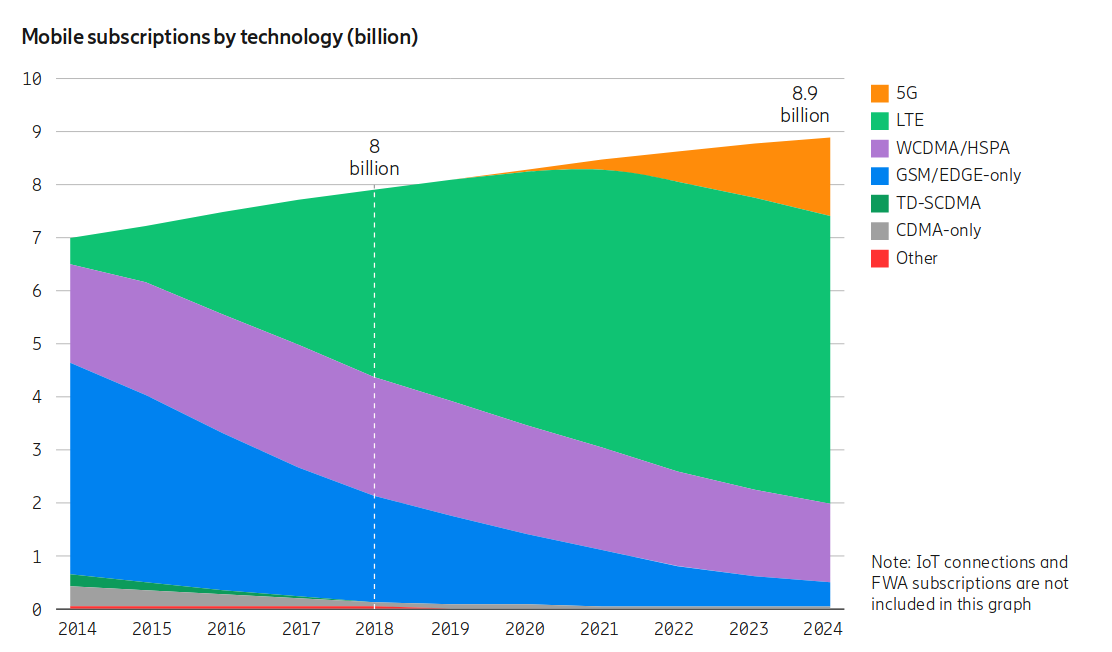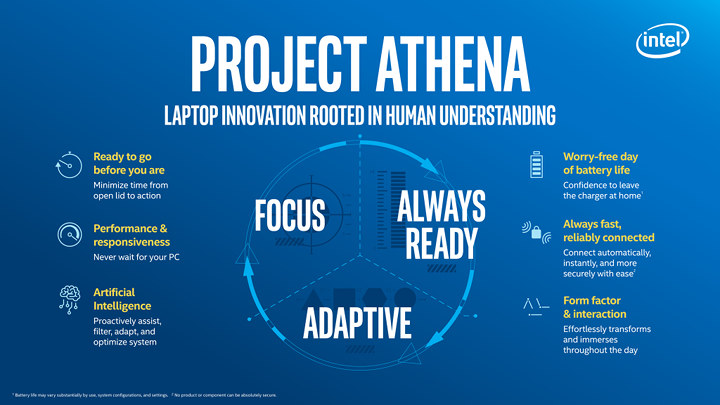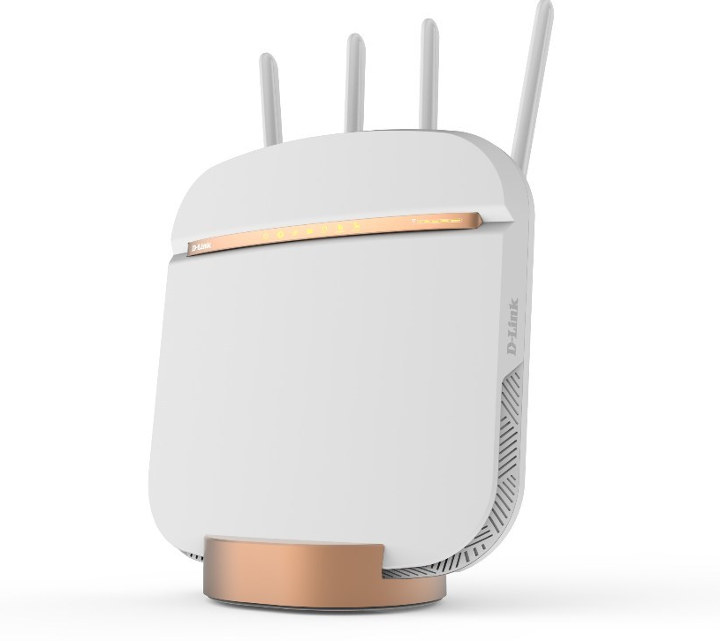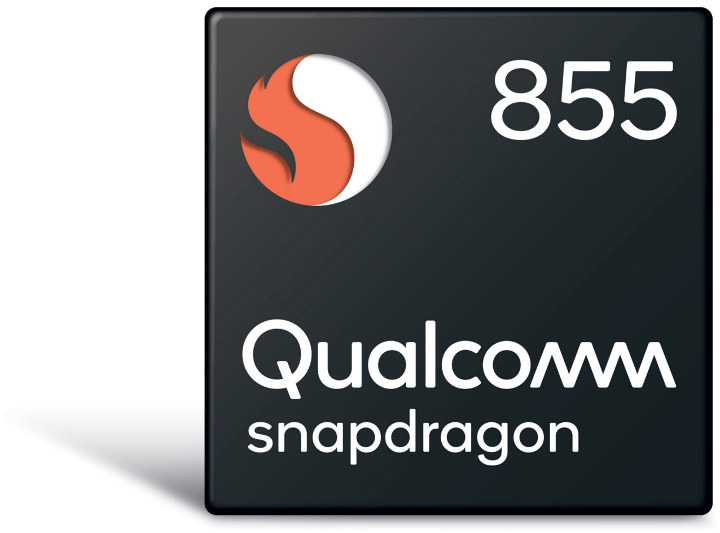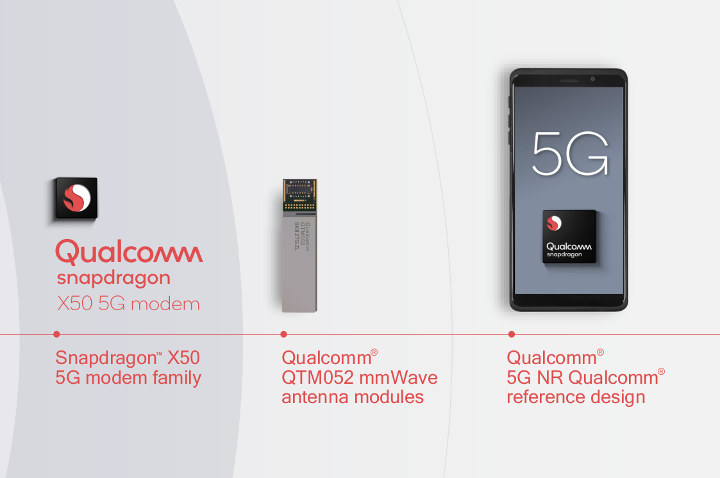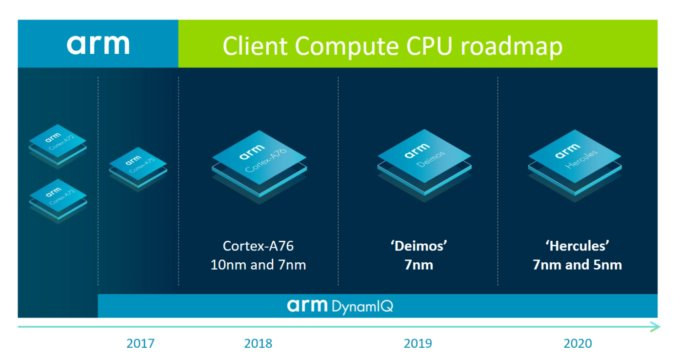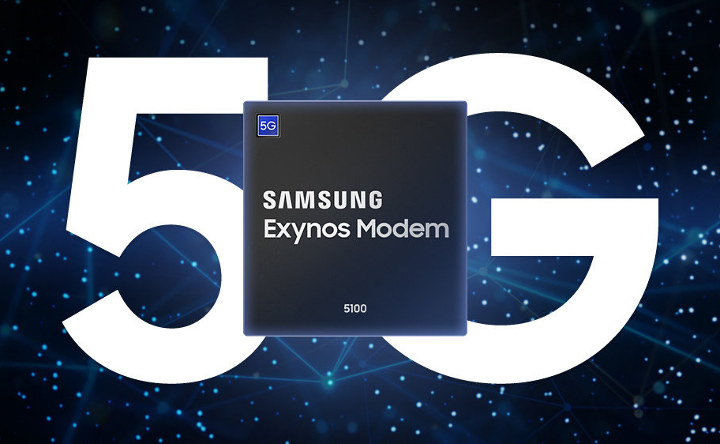5G has yet to really take off, as it’s only available in a few cities, but a recent report publishes by Ericsson provides some forecasts for the future of 5G and cellular IoT connectivity, as well as interesting numbers of the current state of cellular networks. There are now 7.9 billion mobile subscriptions, more than humans, including 5.7 billion mobile broadband subscription, with Asia clearly dominating the field due to its much larger population. Asia also accounts for most of the recent growth in subscriptions, and interestingly people in Central and Eastern Europe (including Russia) especially appears to need more than one mobile subscription with 142% penetration, which means on average one person has 1.4 mobile subscriptions. There are more subscriptions than people in most of the continents/countries, but to a lesser extent, and India (87%) and Africa (82%) are the only exceptions. The chart above allows us to look […]
Intel Project Athena Defines Guidelines for Always-On 5G Laptops
Arm, Qualcomm and their partners first introduced always-on always-connected mobile PCs running Windows 10 in 2017 with over 20 hours of battery life and LTE connectivity. The first models delivered on their battery life promise, but they were expensive while delivering underwhelming performance, but the upcoming Snapdragon 8cx processor should address performance concerns. Those type of laptops are still a niche market, and so far Intel and their partners have not delivered similar type of laptops with long battery life, cellular connectivity, and always-on capabilities. That’s where Intel’s Project Athena innovation program comes in. The program that defines a new class of advanced laptops running either Windows or Chrome OS operating systems, offering long battery life, 5G connectivity, artificial intelligence, and consistently powered on. They may not target the 20 hours of battery life like on Arm platform, but the part of the infographic above reads “worry-free day of battery […]
D-Link DWR-2010 5G NR Enhanced Gateway Targets the Home Market
It’s possible to use 3G/4G WiFi router either with built-in support or an external cellular USB dongle, but most people likely do so as a backup solution since fixed broadband Internet is usually cheaper and faster, obviously depending on your location. But things may be different with 5G connectivity as currently announced 5G modems, such as Qualcomm Snapdragon X50 or Samsung Exynos Modem 5100, promise download speeds of up to 5 to 6 Gbps. D-Link has unveiled 5G NR WiFi 5 gateway for the home market with D-Link DWR-2010 right before CES 2019. The 5G NR enhanced gateway supports download speeds that are over 40 times faster than the average fixed broadband speed of 70 Mbps in the US, so that would be close to 3 Gbps. D-Link DWR-2010 5G NR enhanced gateway key features: 5G connectivity Chipset – Qualcomm SDX55 (Snapdragon X55) Embedded 5GNR NSA module (3GPP Rel.15) Sub-6 […]
Year 2018 in Review, Top 10 Posts, and Some Stats
That’s it, we’ve already reached the last day of 2018, and it’s time to have a look back at what happened during the past year. On the mini PC front, Gemini Lake based mini PCs took over from Apollo Lake with some performance improvements, but I expected the price point to be a bit lower than it is today. Apart from further developments with regards to mobile processors, it feels 2018 was an off-year for processors, such as the ones found in TV boxes and development boards, with mostly more of the same. Allwinner and Rockchip did not release any really interesting processor, and Amlogic only launched S905X2 and S905Y2 which are mostly evolutions of their previous generation with an OpenGL 3.x capable GPU and USB 3.0. Rockchip RK3399 stood out this year, as despite being launched in 2016, it suddenly became popular again with many RK3399 SBCs coming to […]
Qualcomm Snapdragon 855 Specifications Published
Qualcomm Tech Summit 2018 started yesterday, and while the company mentioned Snapdragon 855, they focused on the benefit of 5G technology. Today is another day, and this time the company released details specifications about the new 5G mobile platform. Snapdragon 855 specifications: CPU – 8x Qualcomm Kryo 485 64-bit cores @ up to 2.84 GHz; 7nm Process Technology; based on leaks, tri-cluster configuration: 1+3+4 Visual Subsystem Adreno 640 GPU OpenGL ES 3.2, OpenCL 2.0 FP, Vulkan 1.1 API support HDR gaming Hardware-accelerated H.265 and VP9 decoder. HDR Playback Codec support for HDR10+, HDR10, HLG and Dolby Vision Volumetric VR video playback 8K 360 VR video playback Qualcomm Artificial Intelligence Engine Qualcomm Hexagon 690 Processor Qualcomm Hexagon Vector Accelerator Qualcomm Hexagon Tensor Accelerator Qualcomm Hexagon Voice Assistant Qualcomm All-Ways Aware Hub Qualcomm Adreno 640 GPU Qualcomm Kryo 485 CPU System Memory – 4×16-bit, LPDDR4x, up to 16GB @ 2133 MHz Display […]
Qualcomm Snapdragon 855 is the First 5G Mobile Processor
Most (all?) CNX Software readers already know 5G cellular technology is coming soon, and companies have already announced 5G modems such as Samsung Exynos 5100, MediaTek M70 or Snapdragon X50, some 5G picocells, but AFAIK, so far nobody had officially unveiled 5G mobile processor. Qualcomm has finally announced their Snapdragon 855 5G mobile processor platform codenamed SDM8150, also delivering 3 times improvement for artificial intelligence workloads thanks to its 4th generation AI engine. As usual, Qualcomm has not provided the full details about the processor during the first announcement, but they just listed some highlights: 4G and 5G connectivity with sub-6 GHz and mmWave support 4th Gen AI engine with 3x performance improvement Improved photography and video via Computer Vision ISP, true 4K HDR video capture Ultrasonic fingerprint support Process – 7nm That’s it, so we have to rely on leaks and benchmarks found around the web to get some […]
Arm Roadmap to 2020 Reveals Deimos and Hercules Processors for 5G Laptops
Arm has just published a roadmap for their Cortex-A processors until 2020, where we can see 7nm Deimos, and 7 to 5 nm Hercules succeeding Arm Cortex A76 core with “laptop class performance” announced last spring. For reference, an Arm Cortex A76 @ 3 GHz is said to outperform an Intel Core i5-7300U (15W TDP) processor at a lower power envelop. The two new Cortex-A cores will offer better better performance, will be launched in 2019 and 2020respectively, and as we’ll see below Arm expects those core to outperform Intel Core i5 processors. Current Arm laptop based on Qualcomm Snapdragon 835 have generally been disappointing in terms of performance, especially considering the prices those are sold for, but after a big jump on performance for Cortex A76 cores, Arm expects a 15% increase in compute performance per year. Hercules is expected to be around 2.5 times faster than current Arm […]
Samsung Unveils Exynos Modem 5100 with 5G, 4G, 3G, and 2G Connectivity
5G will start being deployed sometimes next year, and we’ve already seen announcement of several 5G modem chips including Qualcomm Snapdragon X50, Mediatek Helio M70 , and Huawei Balong 5G01. Samsung has now announced their own 5G cellular modem chip with Exynos Modem 5100. Specifications: 5G NR – Sub-6GHz, mmWave Supported Modes (Backward compatibility) 4G – LTE-FDD, LTE-TDD 3G – HSPA, TD-SCDMA, WCDMA 2G – CDMA, GSM/EDGE Downlink Features 8CA (Carrier Aggregation) in 5G NR up to 6 Gbps (mmWave) and up to 2Gbps (Sub-6GHz) 8CA (Carrier Aggregation) in LTE up to 1.6 Gbps 4×4 MIMO FD-MIMO Up to 256-QAM in sub-6GHz Up to 64-QAM in mmWave Uplink Features 2CA (Carrier Aggregation) in 5G NR 2CA (Carrier Aggregation) in LTE Up to 256-QAM in sub-6GHz Up to 64-QAM in mmWave Process – 10nm FinFET Process (10LPP) The Exynos Modem 5100 is compliant with 5G NR (New Radio) standard defined by […]


